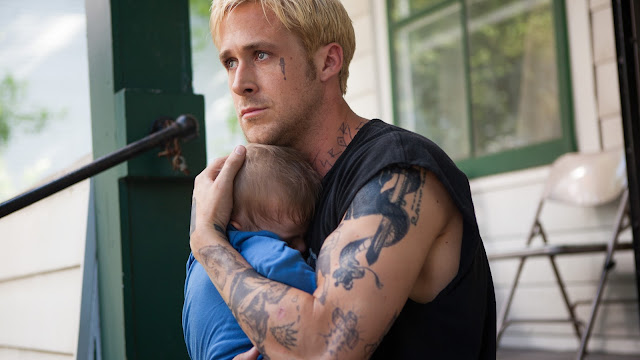Director Derek Cianfrance on ‘The Place Beyond the Pines’ and the Magic of Ryan Gosling
For the director, it goes back to a viewing of Abel Gance’s Napoléon when he was in film school, some 20 years ago. “First off, the whole movie was the greatest movie I’d ever seen, at that point in my life,” he explains. But what really grabbed him was Gance’s famous climax, in which three images are run simultaneously (sometimes as three parts of a single image). “It just blew me away,” Cianfrance recalls. “And I’ve always seen triptychs in paintings or whatever, and all of a sudden I had this idea to make a movie that was a triptych movie. I didn’t know what form it was going to take — I had I thought for a while I was gonna do a film that was gonna be three films on the screen simultaneously. I didn’t know what it was, I just knew I wanted to do a movie that was a triptych.”
Around the same time, he first saw Psycho. “I’d always known that there was the shower scene in Psycho, but I didn’t know that you had to spend 45 minutes with Janet Leigh before she went in the shower. And that amazing kind of hand off between her and Tony Perkins just structurally blew me away.” Throw in his own thoughts on mortality and legacy, prompted by the birth of his second son Cody, and Cianfrance came up with the unique stew that is The Place Beyond the Pines.
The film marks his second collaboration with Ryan Gosling, whom he describes, entirely free of cynicism, as “just a magic person. I feel like he makes the world a better place, and he makes the movie, when you’re making the movie with him, a better movie. He brings people up around him, you know, he makes me a better filmmaker. It’s been a real gift for me to be able to work with him on a couple movies.” They first worked together on Cianfrance’s last picture, Blue Valentine, which he famously spent a dozen years making. “Blue Valentine was 12 years and this was six, so I guess I’m getting faster,” he laughs. “Blue Valentine was 66 drafts, this was 37 drafts, so I’m cutting my time pretty much in half. Maybe the next one will only be three years!”
Those periods were concurrent, of course, and the seeds for this film were sewn during that one. During Valentine’s lengthy gestation period, according to the director, “I asked Ryan, I said, ‘Man, you’ve done so many things in your life, you know. What haven’t you done that you’ve always wanted to do?’ And he said, ‘Well, I always wanted to rob a bank,’ and I was like, ‘Really? I’m writing a movie about a bank robber. Have you given it any thought how you would do it?’ He says, ‘Well, I’d do it on a motorcycle, because I could go in with a helmet and no one would know who I was, and then I’d leave on the motorcycle ‘cause they’re fast and they’re agile, and I could get away. And then I’d have a cube truck parked about four blocks away and I’d drive it into the back of the cube truck and then the cops would be looking for a motorcycle, not a cube truck.’ And I said, ‘That’s crazy, that’s exactly what we’ve written,’ so it felt like destiny.” During the production of Blue Valentine, “it was kind of always prepared to be the film that we made right after. Then Blue Valentine came out and there were a lot more options on the table for me, kinda surprisingly, but I felt like I just needed to continue with what was true to me and maybe make another very personal film.”
What’s fascinating about The Place Beyond the Pines is how many different movies it is at once — not just in terms of the “triptych” storytelling, but in merging crime story and personal drama (“I slept under a photograph of Scorsese for my whole life”), cop movie and family movie, and, most importantly, narrative and documentary. Cianfrance’s first film, Brother Tied, played Sundance in 1998, “and it was all style over substance, you know what I mean, it was all content illuminating form. It was all about what I could do visually and cinematically and of course that movie never got seen, and I had to spend these 12 years in this cinematic desert, you know, and I felt like — this is another Catholic thing — I felt like paying penance for my sins, you know, my cinema sins.” During that period, he found himself making documentaries, and was “quickly humbled as a documentary filmmaker. No longer was it about me, I was telling other people’s stories… and what I did is I started to train myself on being prepared to be in moments and to capture things and I got a real adrenaline rush and thrill out of being surprised as a filmmaker.”
Cianfrance’s films now vibrate with that surprise and spontaneity — with the feeling of events captured rather than staged, of behavior observed rather than scripted. “I feel so fortunate that I had those 12 years to not make films,” he says. “If I had success too early on with my first film, my films would have been egomaniacal, you know, they would’ve been megalomaniac movies. Now I feel like I’m making films that are humble, and they’re about people.”




Comments
Post a Comment